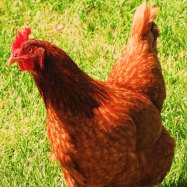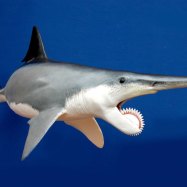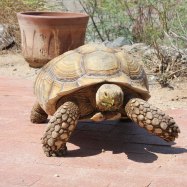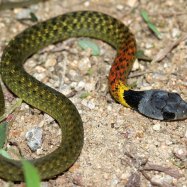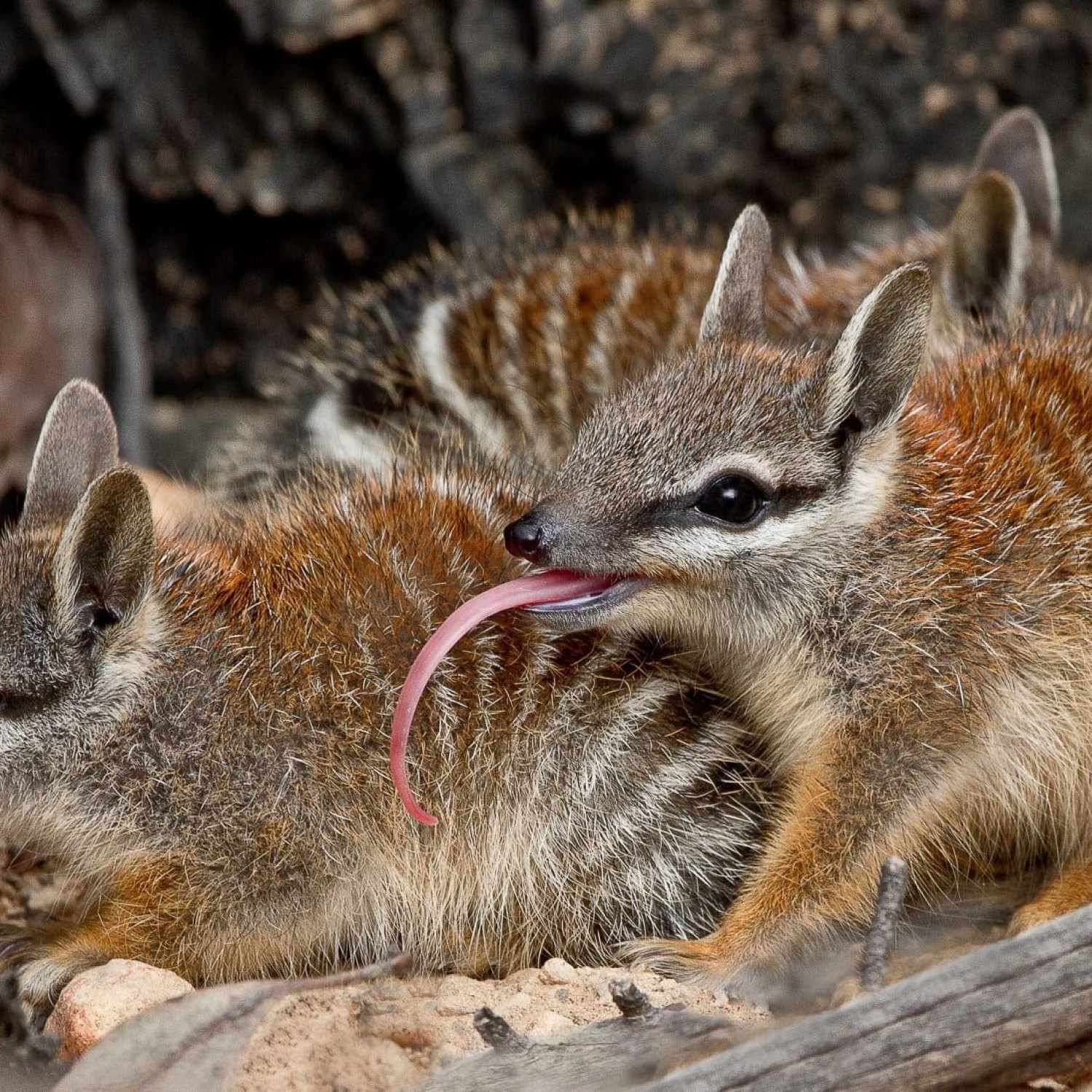
Numbat
Up to 45 cm
The numbat, also known as the banded anteater, is a small marsupial found in Western Australia. It belongs to the Myrmecobiidae family and can grow up to 45 cm in length. With its slim and elongated body, this unique animal is known for its love of termites and plays a vital role in keeping the termite population in check. #Numbat #WesternAustralia #Myrmecobiidae #BandedAnteater
Animal Details Summary:
Common Name: Numbat
Kingdom: Animalia
Habitat: Woodlands, eucalypt forests
The Fascinating World of Numbats: Australia's Striped Ant-Eating Marvel
Have you ever heard of a Numbat? If not, you're in for a treat. This unique and charming animal is a true marvel of nature, with its distinctive coloring and incredible abilities. Despite its small size, the Numbat is a fascinating and important part of the Australian ecosystem. In this article, we will take a closer look at this little-known animal and discover what makes it so special Numbat.A Rare Find: The Numbat's Scientific Name and Classification
The Numbat, also known as Myrmecobius fasciatus, belongs to the Animalia kingdom and the Chordata phylum. Within the class of Mammalia, it falls under the order of Dasyuromorphia and the family of Myrmecobiidae. These scientific names may sound complicated, but they simply mean that the Numbat is a mammal that belongs to the group of carnivorous marsupials known as dasyurids.The Beauty of a Numbat: Appearance and Physical Characteristics
The Numbat's appearance is striking, with its reddish-brown fur and white stripes adorning its slim and elongated body. Its face is marked with white patches around the eyes and a white stripe running down the center of its snout. The Numbat's body measures up to 45 cm in length, and it weighs between 400-700 g. Its small size may be deceiving, but the Numbat is a surprisingly agile and athletic animal.Australian Roots: Habitat and Distribution
The Numbat is native to southwestern Australia, with its primary habitat being woodlands and eucalypt forests. It can also be found in open woodland areas and areas with low scrub vegetation Norwich Terrier. The animal's natural habitat is becoming increasingly fragmented, leading to a decline in its population. Currently, the only remaining wild population of Numbats can be found in Western Australia, with small populations being established in other areas as part of conservation efforts.Feasting on Ants: Diet and Feeding Habits
The Numbat is a specialized insectivore, which means it feeds primarily on insects. Its favorite food is termites, which it obtains by using its well-developed claws to dig into termite mounds. The Numbat's long, sticky tongue can extend up to 10 cm, making it the perfect tool for catching its prey. In one day, a Numbat can consume up to 20,000 termites, making it a valuable ally for farmers as it helps control termite populations.The Unique Country of Origin: Australia
As mentioned earlier, Numbats can only be found in Australia, making them a truly unique species. The land down under is known for its diverse and unique wildlife, and the Numbat is no exception. Australia's isolation from other continents has allowed for the evolution of many distinct and unusual animals, including the Numbat.A Protected Species: Conservation Efforts for Numbats
Sadly, Numbats are listed as an endangered species, with only an estimated 1000 individuals remaining in the wild. The decline in their population is mainly due to habitat loss, owing to land clearing and agricultural development. However, conservation efforts have been put in place to protect this species. In 1985, the Perth Zoo established the Project Numbat program, which focuses on conservation efforts and raising awareness about Numbats. Additionally, there are breeding programs in place, and Numbats have been successfully reintroduced into the wild in some areas.The Fascinating World of Numbats: Fun Facts
• The Numbat is also known as the Banded Anteater, the Walpurti, or the Noombat.• Despite being named after ants, Numbats mainly feed on termites.
• Numbats are diurnal, meaning they are active during the day.
• They have a lifespan of 5-8 years in the wild and up to 11 years in captivity.
• Like other marsupials, Numbats carry their young in a pouch until they are fully developed.
In Conclusion
In conclusion, the Numbat is a unique and fascinating animal that is unfortunately facing the threat of extinction. Its distinctive appearance, specialized diet, and important role in the ecosystem make it a truly remarkable species. With conservation efforts in place, there is still hope for the survival of Numbats in the wild. As we continue to learn and appreciate the diverse and awe-inspiring wildlife that exists in our world, it is important that we also take action to protect and preserve it for future generations.

Numbat
Animal Details Numbat - Scientific Name: Myrmecobius fasciatus
- Category: Animals N
- Scientific Name: Myrmecobius fasciatus
- Common Name: Numbat
- Kingdom: Animalia
- Phylum: Chordata
- Class: Mammalia
- Order: Dasyuromorphia
- Family: Myrmecobiidae
- Habitat: Woodlands, eucalypt forests
- Feeding Method: Insectivorous
- Geographical Distribution: Southwestern Australia
- Country of Origin: Australia
- Location: Western Australia
- Animal Coloration: Reddish-brown with white stripes
- Body Shape: Slim and elongated
- Length: Up to 45 cm
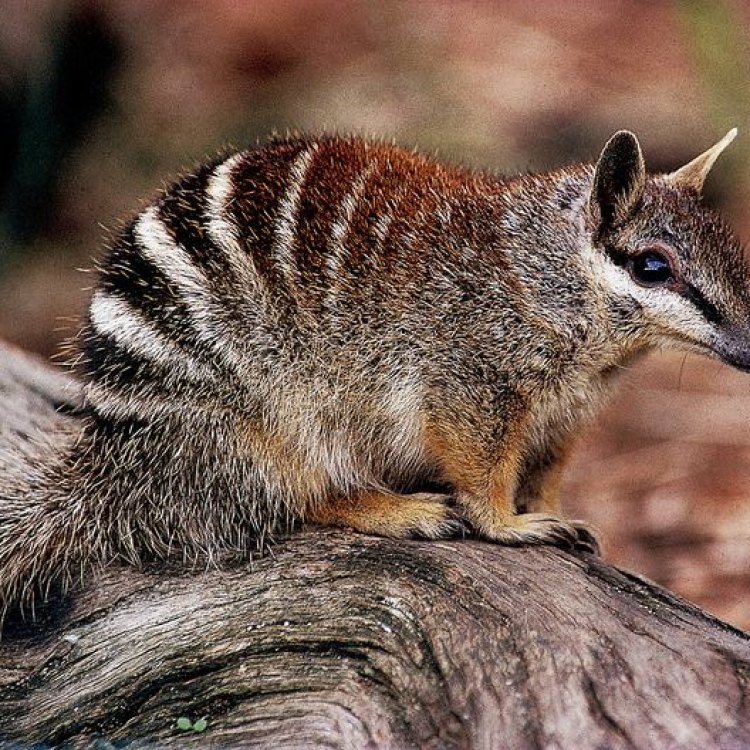
Numbat
- Adult Size: Small
- Average Lifespan: Up to 5 to 10 years
- Reproduction: Sexual
- Reproductive Behavior: Monogamous
- Sound or Call: Trill or twitter
- Migration Pattern: Non-migratory
- Social Groups: Solitary
- Behavior: Diurnal
- Threats: Habitat loss, introduced predators
- Conservation Status: Endangered
- Impact on Ecosystem: Important for controlling termite populations
- Human Use: None
- Distinctive Features: Bushy tail, long sticky tongue
- Interesting Facts: Only marsupial that is almost exclusively insectivorous
- Predator: Feral cats, foxes
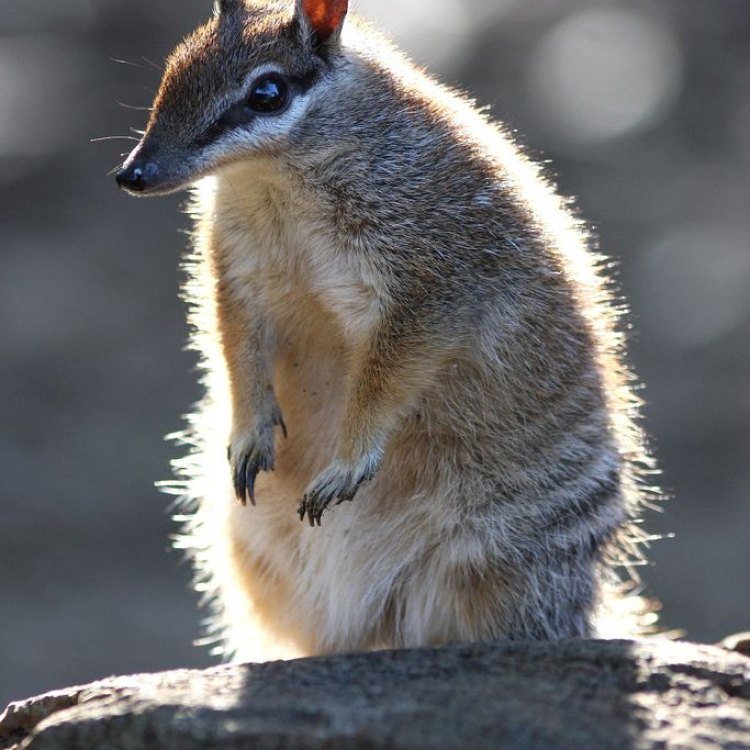
Myrmecobius fasciatus
The Unique Numbat: A Small, Solitary and Endangered Marsupial
Australia is known for its diverse wildlife, from kangaroos and koalas to emus and echidnas. However, there is one Australian animal that is not as well-known, but just as fascinating – the numbat. This small marsupial, also known as the banded anteater, is a unique creature that has captured the hearts of many with its distinctive features and interesting behaviors.Size and Lifespan
The numbat (Myrmecobius fasciatus) is a small animal, similar in size to a squirrel PeaceOfAnimals.Com. It can grow up to 20 inches in length, with a perfect camouflage coat of reddish-brown fur, marked with white stripes across its back. This unique pattern helps the numbat blend in with the dry, sandy habitats it inhabits in Western Australia. Despite its small size, the numbat has a long lifespan, with the potential to live up to 5 to 10 years in the wild.
Reproduction and Behavior
Numbats are reproductive animals, with both genders being sexually active throughout the year. They are known to be monogamous, forming a long-term pair bond with a single mate. This helps ensure the survival of their offspring, as both parents are involved in raising and nurturing their young.
One of the most unique things about the numbat is its reproductive behavior. Unlike other marsupials, numbat females have a pouch that faces backward, towards their tail. This unique positioning helps ensure that dirt and debris do not enter the pouch while the female digs for food Nuthatch.
Sound and Migration
Numbats are non-migratory animals, meaning they do not travel significant distances during different seasons. They prefer to stick to a small home range, which is about 80-100 hectares in size. However, they do have a distinctive sound or call - a trill or twitter - that they use to communicate with other numbats in the area.
Social Groups and Behavior
Unlike many other Australian animals, the numbat is a solitary creature, spending most of its time alone. It is primarily active during the day (diurnal), spending its nights in a tree hollow or underground burrow. Numbats are also not territorial and have been observed sharing space with other numbats without any conflict.
Threats and Conservation Status
Unfortunately, the numbat is classified as endangered on the IUCN Red List. One of the main threats to their survival is habitat loss due to land clearing for agriculture and grazing. Introduced predators, such as feral cats and foxes, also pose a significant threat to numbats. These predators have been known to hunt and kill numbats, leading to a decline in their already small population size.
Impact on Ecosystem and Human Use
While numbats may not be directly beneficial to humans, they play a vital role in controlling termite populations in their habitat. Numbats are almost exclusively insectivorous, feeding primarily on termites. As termites are significant pests in Australia, numbats' presence can help control their numbers, potentially reducing damage to agriculture and human structures.
Distinctive Features and Interesting Facts
The numbat has several distinctive features that set it apart from other animals. Its most notable feature is its bushy tail, which helps with balance when climbing trees or hunting for food. But what makes the numbat truly unique is its long sticky tongue, which can extend over seven inches, allowing it to reach termites hiding deep within their tunnels.
Another interesting fact about the numbat is that it is the only marsupial that is almost exclusively insectivorous. This means it primarily feeds on insects, with termites making up 80% of its diet. This is unusual for a marsupial, as most other species are either herbivores or omnivores.
In addition to its unique features, the numbat also has a complex digestive system. It has a multi-chambered stomach that allows it to digest termites, which have a tough outer shell, more efficiently. This shows how well-adapted the numbat is to its insectivorous diet.
Conservation Efforts
Given its endangered status, there have been several conservation efforts in place to help protect the numbat. The most significant of these is the Numbat Recovery Program. This program aims to increase public awareness about the numbat and its threatened population, as well as implement measures to help protect and preserve its habitat.
Additionally, there have been successful captive breeding programs that have been able to release a significant number of numbats back into the wild. These efforts have seen a slight increase in the numbat population, giving hope for the species' survival in the future.
Conclusion
The numbat is a unique and fascinating marsupial that is often overshadowed by its more famous Australian counterparts. With its bushy tail, long sticky tongue, and almost exclusive insectivorous diet, the numbat is an intriguing creature that has adapted perfectly to its environment. However, with threats such as habitat loss and introduced predators, it is essential that we continue to raise awareness and take action to protect this endangered species and preserve its important role in the ecosystem.
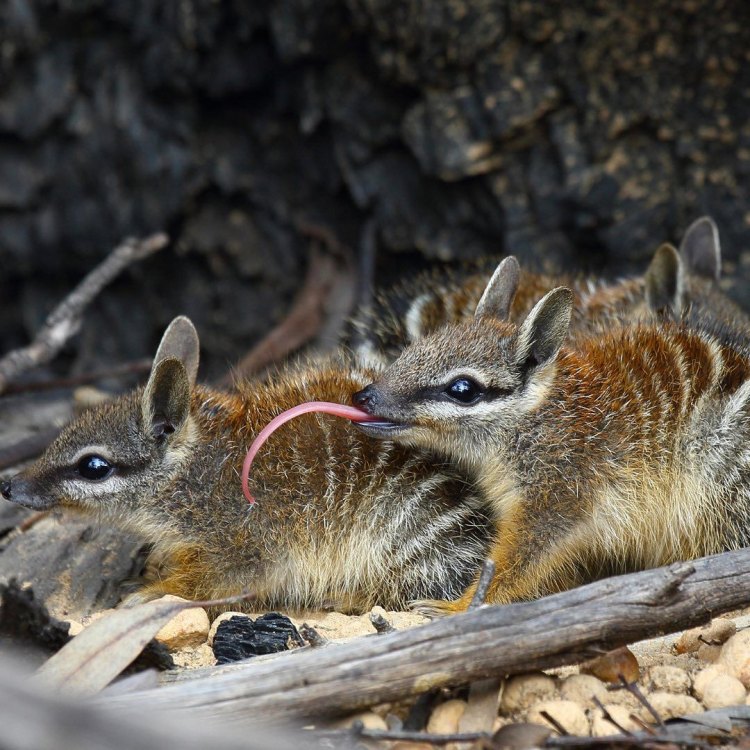
The Fascinating World of Numbats: Australia's Striped Ant-Eating Marvel
Disclaimer: The content provided is for informational purposes only. We cannot guarantee the accuracy of the information on this page 100%. All information provided here may change without prior notice.

